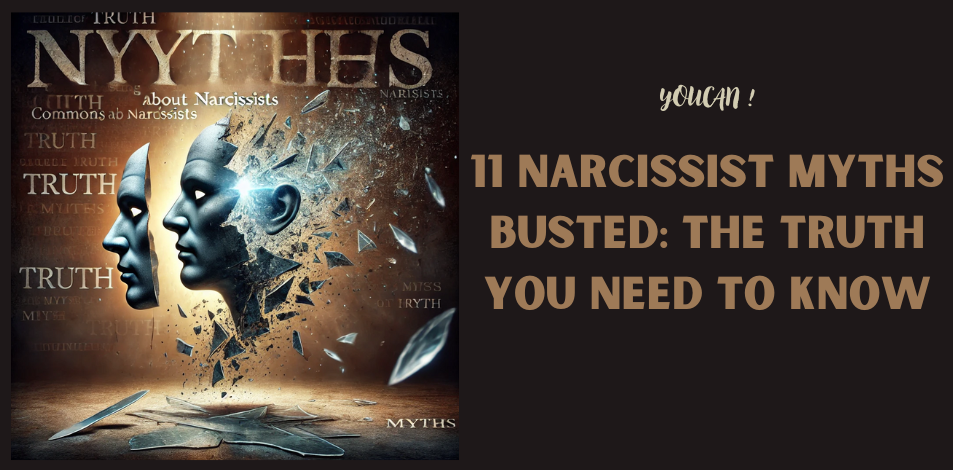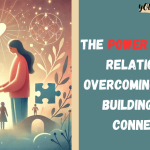
Narcissism is a topic that evokes strong emotions and widespread misconceptions. If you’ve ever interacted with a narcissist or read about them in the media, you’ve likely encountered a number of stereotypes. These myths can cloud our understanding of what narcissism really is, how it affects others, and how it manifests itself in everyday behavior.
In this article, we’ll debunk 11 common myths about narcissists, and reveal the hidden truths behind them. If you’re trying to manage a relationship with a narcissist or simply want to understand more about the personality type, this will give you the clarity you need. Let’s dive in!
Myth #1: Narcissists are always confident
Reality: While narcissists often project an aura of confidence and superiority, their self-esteem is often fragile. Behind the bravado lies a deep-seated fear of being exposed as inadequate or inferior. This insecurity feeds their need for constant admiration and validation. They may seek praise from others to mask feelings of worthlessness or failure.
Tip: Realize that narcissists may be compensating for insecurities rather than displaying true confidence.
Myth #2: Narcissists love themselves above all else
Reality: It’s easy to assume that narcissists love themselves, but the truth is more complicated. Their self-love is superficial, based on the admiration of others, and tied to their image. When faced with criticism or a threat to their reputation, their self-esteem can crumble. Narcissists may struggle to develop true self-love because their self-worth is dependent on external validation.
Tip: Their behavior may appear to be self-love, but it’s often rooted in a need for validation, not true self-acceptance.
Myth #3: Narcissists are always in control of their emotions
Reality: Narcissists may appear emotionally detached or controlling, but they are often highly reactive. They can be volatile and prone to emotional outbursts when they feel insulted or criticized. Their emotional responses tend to be disproportionate to the situation, especially when their fragile self-image is threatened.
Tip: Be alert for sudden mood swings. Their emotional stability is often just a facade for deeper insecurities.
Myth #4: Narcissists are always manipulative
Truth: While manipulation is a common tactic used by narcissists, not all narcissists engage in overt manipulation. Some may use subtle forms of control, such as manipulating others or guilt tripping. They may also rely on charm and charisma to get what they want, without appearing manipulative on the surface. Narcissists know how to manipulate without being obvious.
Tip: Look for patterns in their behavior over time to spot subtle manipulation.
Myth #5: Narcissists are just bad people
Fact: Narcissism is a personality disorder, not just a bad personality trait. Many narcissists struggle with deep-rooted issues like childhood trauma, emotional neglect, or difficult life experiences. These struggles can contribute to the development of narcissistic traits, leading to a distorted view of themselves and others. They may not be “bad” in the traditional sense, but rather confused by their internal struggles.
Tip: While narcissism can lead to toxic behavior, understanding the root causes can help you approach the situation with compassion.
Myth #6: Narcissists can’t change
Fact: Narcissism is indeed difficult to treat, but that doesn’t mean change is impossible. Therapy, especially cognitive behavioral therapy (CBT), can help narcissists recognize their behavior and work toward healthier ways of thinking. While the road to change is long and requires a willingness to change, some narcissists do seek help and make progress.
Tip: If you’re dealing with a narcissist, don’t assume they’re beyond repair. If they’re open to treatment, change is possible.
Myth #7: Narcissists don’t have empathy
Truth: Narcissists struggle with empathy, but that doesn’t mean they lack it entirely. They have a limited capacity for empathy, especially when it comes to the needs or feelings of others that don’t directly benefit them. However, they can show empathy in certain circumstances — if it helps them maintain their image or secure their interests.
Tip: Understand that narcissists may display “situational” empathy, where they only care about others when it serves them.
Myth #8: Narcissists are always selfish
Truth: While narcissists often appear self-absorbed, they can also be charming and hyper-focused on others — especially when it serves their agenda. Narcissists have a unique ability to charm people, sometimes becoming the center of attention in social situations. They may use their attention on others to build their own status or enhance their superiority.
Tip: Don’t confuse charisma with genuine caring. Their focus on others often stems from self-interest.
Myth #9: Narcissists are never vulnerable
Reality: Narcissists tend to hide their vulnerability behind arrogance or self-defense, but they can be deeply affected by perceived threats to their image. When faced with criticism or failure, they can experience intense emotional pain, although they often don’t show it. Their vulnerability is hidden under layers of pride and denial.
Tip: If a narcissist seems unaffected by something, there may be a deeper vulnerability they’re trying to hide.
Myth #10: Narcissists are always trying to hurt others
Reality: While narcissists’ behavior can be harmful, it’s not always intentional. Their actions often stem from a need for admiration, validation, or control, rather than a deliberate desire to hurt. Narcissists may be selfish and disregard others’ feelings in pursuit of their goals, but that doesn’t mean they aim to cause harm.
Tip: Recognize that their actions may stem from their own insecurities, not malice.
Myth #11: Narcissists can’t form relationships
Truth: Narcissists can form relationships, but they tend to be superficial and one-sided. They may seek out partners who admire and worship them, but they rarely engage in relationships where mutual respect and emotional reciprocity are key. In romantic relationships, for example, narcissists often demand attention and admiration while giving little in return.
Tip: If you’re in a relationship with a narcissist, recognize that while they can form relationships, they often fail to engage on an equal emotional level.
Conclusion: Understanding Narcissists
Narcissism is a complex personality trait, shaped by internal insecurities and external behaviors. The myths surrounding narcissists can prevent us from seeing them clearly and managing relationships with them effectively. By understanding these common misconceptions and learning the truth behind them, we can better manage our interactions with narcissists—whether in the workplace, in social circles, or in romantic relationships.
Remember, dealing with narcissists isn’t about labeling them as “good” or “bad,” but rather understanding their behaviors and how to protect your emotional well-being. The hidden truth behind their actions can be eye-opening and, in some cases, provide a path to healthier interactions or self-protective strategies.
See also: How to Rebuild After a Friendship with a Narcissist: A Step-by-Step Guide




